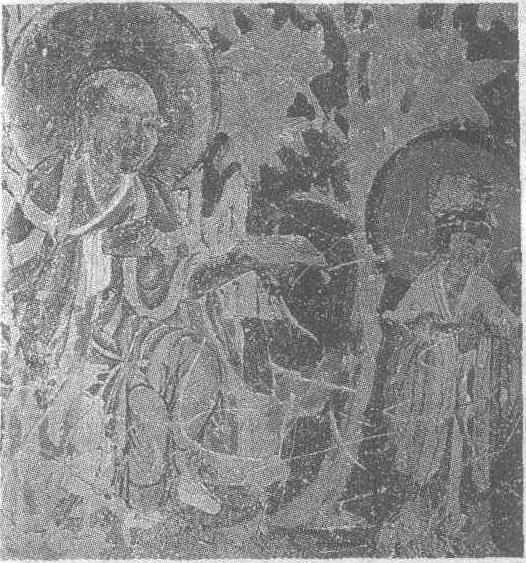佛弟子及供养人像壁画
五代。甘肃省肃北蒙古族自治县五个庙石窟第1窟南壁壁画。图中弟子内着交领衫,外披红色袈裟,为结跏趺坐,左手持器,意在请求施与。其左侧为一女供养人,戴冠,着宽袖对襟长袍,双手合十,虔诚而立。画风粗犷、豪迈,人物线条勾勒娴熟,脸及服饰局部有晕染,立体效果增强。此图显然是将佛弟子作为本尊供养,这种现象在佛教壁画中是不多见的。

| 词条 | 佛弟子及供养人像壁画 |
| 类别 | 中文百科知识 |
| 释义 | 佛弟子及供养人像壁画五代。甘肃省肃北蒙古族自治县五个庙石窟第1窟南壁壁画。图中弟子内着交领衫,外披红色袈裟,为结跏趺坐,左手持器,意在请求施与。其左侧为一女供养人,戴冠,着宽袖对襟长袍,双手合十,虔诚而立。画风粗犷、豪迈,人物线条勾勒娴熟,脸及服饰局部有晕染,立体效果增强。此图显然是将佛弟子作为本尊供养,这种现象在佛教壁画中是不多见的。
|
| 随便看 |
开放百科全书收录579518条英语、德语、日语等多语种百科知识,基本涵盖了大多数领域的百科知识,是一部内容自由、开放的电子版国际百科全书。